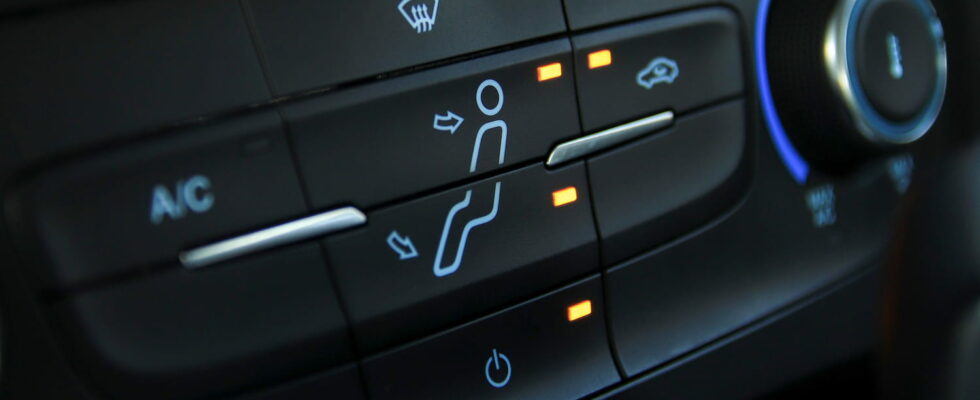Used intelligently, this often overlooked feature can significantly reduce your car’s energy consumption, resulting in fuel savings.
When it’s hot outside, especially in the summer, your car’s air conditioner has to work hard to cool the interior. If your vehicle has been exposed to the sun for a long time, the interior can reach very high temperatures, sometimes up to 50 degrees. In these conditions, the air conditioner has to use a lot of energy to cool the interior to a comfortable level. This is where the air recirculation button comes in handy.
Present on all vehicles, even without air conditioning, this button flanked by a symbol showing a car with a U-shaped arrow inside, activates the air recirculation function. Used intelligently, it can significantly reduce the energy consumption of your air conditioner, which translates into fuel savings. By activating air recirculation, the car’s air conditioning system uses the already cooled air inside the car, rather than drawing warm air from outside. This allows the cabin to cool much more quickly and reduces the load on the air conditioner. Less energy is needed to maintain a comfortable temperature, which means the engine uses less fuel.
However, it is important to know when and how to use this button correctly. Air recirculation is particularly effective when the indoor temperature is lower than the outdoor temperature. In this situation, the air conditioning system can operate more efficiently and consume less energy. On the other hand, if the outdoor temperature is lower than the indoor temperature, it is better to let in the cooler outside air.
It is also crucial not to use air recirculation continuously for long periods of time. When this function is activated, fresh air is no longer entering the car, which can increase the concentration of carbon dioxide inside, especially if you have several passengers. This can make the air less breathable and even cause drowsiness. In addition, if the windows start to fog up, it is a sign that the humidity inside is increasing, and you should turn off air recirculation to avoid this problem.
In winter, it is generally not recommended to use air recirculation because it can increase condensation and fogging on the windows. However, in certain situations such as waiting in the car in a polluted environment, recirculation can be useful. In this case, it prevents impure outside air from entering the passenger compartment.
Some car models have automatic air recirculation, while others require manual activation. There are even cars with a timer function to prevent accidental prolonged activation. To find out exactly how this function works in your car, consult the owner’s manual or do some testing.
